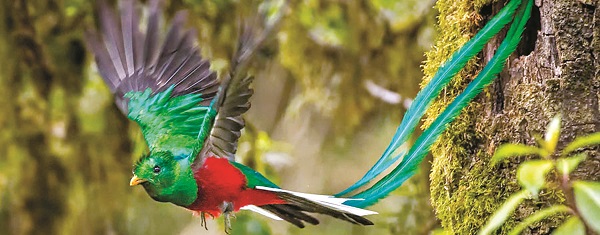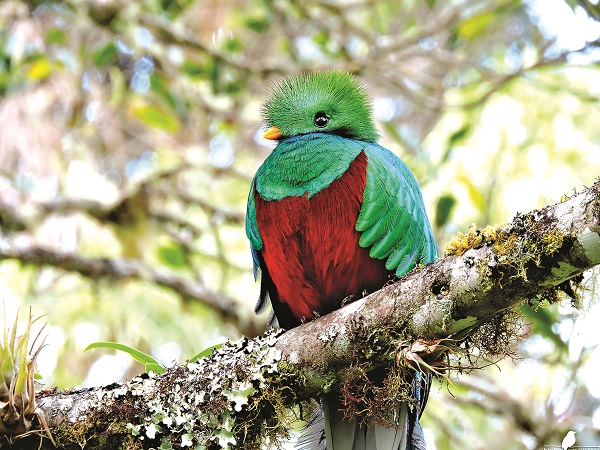Birds with rare, beautiful, smooth tail feathers
This bird is known for its bright green plumage, deep red underparts, and rough green crest. Most impressive is the long, silky tail feathers, twice the length of this bird's body.
The Quetzal bird is a rare and beautiful bird in the world. They are as small as a pigeon, with a red belly and a green back, while the head and chest are light brown, the whole body's feathers radiate a brilliant green color and they have a lovely bright red beak. The red and green colors of this bird blend together to create an eye-catching whole.

“Quetzal” means “yellow-green feather” in the languages of the Mayan and Aztec Indians. Quetzal birds belong to the Trogonidae family, living in forests from southern Mexico to western Panama. These are omnivorous birds, they eat almost anything, including fruits, berries, insects, lizards, frogs and any other small animals they can catch.
The tail feathers of the Quetzal bird are culturally important. In the ancient Mayan and Aztec civilizations, only the king and high priests were allowed to wear this long tail feather as blue as jade. In many languages in Central America, the word "Quetzal" also has the meaning of precious, divine, and upright.

The bird is known as a symbol of freedom
Because Quetzal birds have a noble temperament and love freedom, they cannot be kept in cages, otherwise they would rather starve to death. Therefore, this bird is also known as the "Freedom Bird", symbolizing divinity and strength in Mayan and Aztec culture.
During the mating season, in addition to the green crest feathers on the top of their heads, they also grow extremely long tail feathers to attract female birds. When needing to attract the attention of the female, the male Quetzal will often fly down from a high tree, revealing the feathers on his back to show his bravery, as well as sing to the female.

When the female bird lays the eggs, they take turns incubating the eggs. When incubating, the male bird will often fold the feathers on his back to avoid being seen. However, because their tail feathers are too long, they will still be exposed.
Today, deforestation, hunting by exotic animal collectors and feather theft have narrowed the habitat and led to a decline in the population of this rare Quetzal bird. However, fortunately, thanks to protected areas such as El Jaguar in Nicaragua and Los Quetzales National Park in Costa Rica, their habitat has been partially protected.

